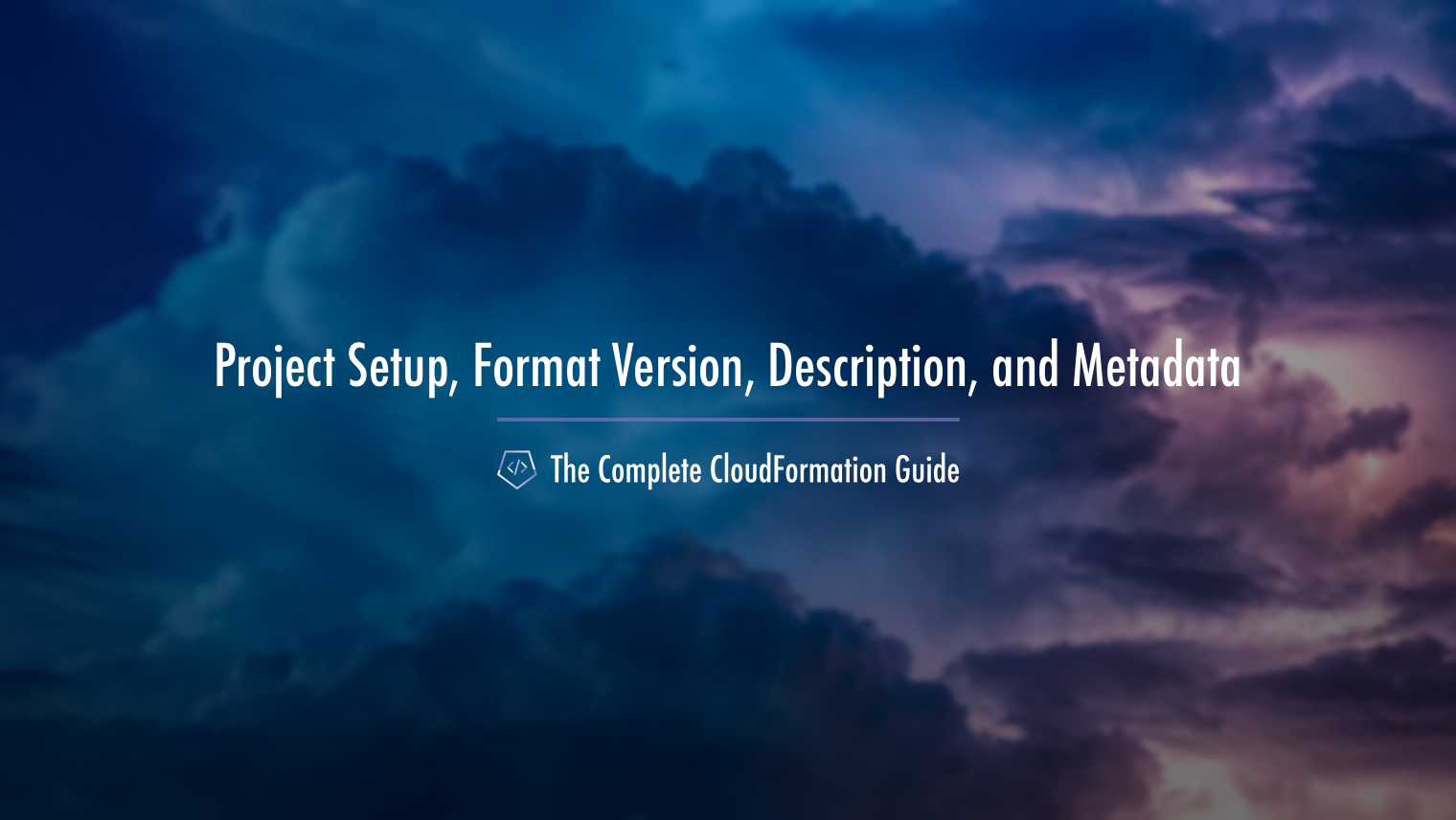The Complete CloudFormation Guide: Setting Up Our Series Project

Table of Contents
- Introduction
- What Are We Doing?
- The Video: Setting Up Our Series Project
- The Template So Far
- Next Steps
- The Complete CloudFormation Guide Index
Introduction
So now we're finally going to dive in and actually get something built with CloudFormation. In the video below we'll begin our journey of examining the full anatomy (aka structure) of a template as we build something for ourselves. This way you can see the pieces come together in practice.
The anatomy of a CloudFormation template has 9 unique sections: the format version, description, metadata, parameters, mappings, conditions, transform, resources, and outputs. And by "has" I mean that it can have, not that every template always includes all nine of these. Each has its own purpose but you don't necessarily need all of them in every template you make. Out of them all, you'll do most of your work with the resources, parameters, and conditions sections. You can see the AWS documentation on template anatomy here which we'll be referencing throughout this launch.
Note: One thing to never ever forget - when listed in your template file (which in this example is in .json format), the properties must begin with upper case letters! I cannot stress this requirement enough. (Let's just say I've forgotten a few times myself.)
What Are We Doing?
In this video, we'll cover the first three sections of AWS CloudFormation template anatomy as we build our security group: the format version, description, and metadata, including a couple special keys in the documentation for that last one. These are the simplest of the nine sections so we'll cover the other six in subsequent videos.
The Video: Setting Up Our Series Project
The Template So Far
{
"AWSTemplateFormatVersion" : "2010-09-09",
"Description": "A template for learning and security groups",
"Metadata": {
"Author": "J Cole Morrison"
}
}
Next Steps
The Next Post - Resources
The Previous Post - How CloudFormation Does Updates and Deletes
The Complete CloudFormation Guide Index
If you're enjoying this series and finding it useful, be sure to check out the rest of the blog posts in it! The links below will take you to the other posts in The Complete CloudFormation Guide here on Tech Guides and Thoughts so you can continue building your CloudFormation template along with me.
- The Complete CloudFormation Guide
- An Introduction to and History of CloudFormation
- The Main Concepts of CloudFormation
- How CloudFormation Does Updates and Deletes
- Our Project Setup
- Resources
- Parameters and Refs
- Our First Time Launch
- Functions, Pseudo Parameters, and Conditions Part 1
- Functions, Pseudo Parameters, and Conditions Part 2
- Mappings
- Transforms
- Outputs
- Relaunch!
- The Best Next Steps to Take from Here
Enjoy Posts Like These? Sign up to my mailing list!

J Cole Morrison
http://start.jcolemorrison.comDeveloper Advocate @HashiCorp, DevOps Enthusiast, Startup Lover, Teaching at awsdevops.io